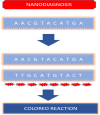Emerging strategies in nanotechnology to treat respiratory tract infections: realizing current trends for future clinical perspectives
- PMID: 35892224
- PMCID: PMC9341380
- DOI: 10.1080/10717544.2022.2089294
Emerging strategies in nanotechnology to treat respiratory tract infections: realizing current trends for future clinical perspectives
Abstract
A boom in respiratory tract infection cases has inflicted a socio-economic burden on the healthcare system worldwide, especially in developing countries. Limited alternative therapeutic options have posed a major threat to human health. Nanotechnology has brought an immense breakthrough in the pharmaceutical industry in a jiffy. The vast applications of nanotechnology ranging from early diagnosis to treatment strategies are employed for respiratory tract infections. The research avenues explored a multitude of nanosystems for effective drug delivery to the target site and combating the issues laid through multidrug resistance and protective niches of the bacteria. In this review a brief introduction to respiratory diseases and multifaceted barriers imposed by bacterial infections are enlightened. The manuscript reviewed different nanosystems, i.e. liposomes, solid lipid nanoparticles, polymeric nanoparticles, dendrimers, nanogels, and metallic (gold and silver) which enhanced bactericidal effects, prevented biofilm formation, improved mucus penetration, and site-specific delivery. Moreover, most of the nanotechnology-based recent research is in a preclinical and clinical experimental stage and safety assessment is still challenging.
Keywords: Respiratory tract infections; bacterial infections; nanodiagnostics; smart nanosystems.
Conflict of interest statement
No potential conflict of interest was reported by the authors.
Figures






References
-
- Adouni Lawani M, Zongo F, Breton MC, et al. (2018). Factors associated with adherence to asthma treatment with inhaled corticosteroids: a cross-sectional exploratory study. J Asthma 55:318–29. - PubMed
-
- Ahmed R, Aucamp M, Ebrahim N, Samsodien H. (2021). Supramolecular assembly of rifampicin and PEGylated PAMAM dendrimer as a novel conjugate for tuberculosis. J Drug Delivery Sci Technol 66:102773.
Publication types
MeSH terms
Substances
LinkOut - more resources
Full Text Sources
